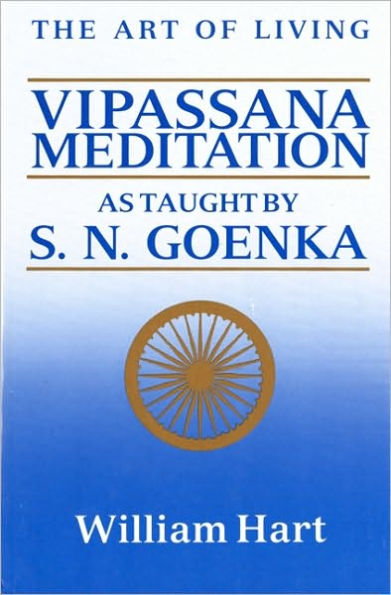Read an Excerpt
Chapter One
The Search
All of us seek peace and harmony, because this is what we lack in our lives. We all want to be happy; we regard it as our right. Yet happiness is a goal we strive toward more often than attain. At times we all experience dissatisfaction in life -- agitation, irritation, disharmony, suffering. Even if at this moment we are free from such dissatisfactions, we can all remember a time when they afflicted us and can foresee a time when they may recur. Eventually we all must face the suffering of death.
Nor do our personal dissatisfactions remain limited to ourselves; instead, we keep sharing our suffering with others. The atmosphere around each unhappy person becomes charged with agitation, so that all who enter that environment may also feel agitated and unhappy. In this way individual tensions combine to create the tensions of society.
This is the basic problem of life: its unsatisfactory nature. Things happen that we do not want; things that we want do not happen. And we are ignorant of how or why this process works, just as we are each ignorant of our own beginning and end.
Twenty-five centuries ago in northern India, a man decided to investigate this problem, the problem of human suffering. After years of searching and trying various methods, he discovered a way to gain insight into the reality of his own nature and to experience true freedom from suffering. Having reached the highest goal of liberation, of release from misery and conflict, he devoted the rest of his life to helping others do as he had done, showing them the way to liberate themselves.
This person -- SiddhatthaGotama, known as the Buddha, "the enlightened one" -- never claimed to be anything other than a man.
Like all great teachers he became the subject of legends, but no matter what marvelous stories were told of his past existences or his miraculous powers, still all accounts agree that he never claimed to be divine or to be divinely inspired. Whatever special qualities he had were pre-eminently human qualities that he had brought to perfection. Therefore, whatever he achieved is within the grasp of any human being who works as he did.
The Buddha did not teach any religion or philosophy or system of belief. He called his teaching Dhamma, that is, "law," the law of nature. He had no interest in dogma or idle speculation. Instead he offered a universal, practical solution for a universal problem. "Now as before," he said, "I teach about suffering and the eradication of suffering." He refused even to discuss anything which did not lead to liberation from misery.
This teaching, he insisted, was not something that he had invented or that was divinely revealed to him. It was simply the truth, reality, which by his own efforts he had succeeded in discovering, as many people before him had done, as many people after him would do. He claimed no monopoly on the truth.
Nor did he assert any special authority for his teaching-neither because of the faith that people had in him, nor because of the apparently logical nature of what he taught. On the contrary, he stated that it is proper to doubt and to test whatever is beyond one's experience:
Do not simply believe whatever you are told, or whatever has been handed down from past generations, or what is common opinion, or whatever the scriptures say. Do not accept something as true merely by deduction or inference, or by considering outward appearances, or by partiality for a certain view, or because of its plausibility, or because your teacher tells you it is so. But when you yourselves directly know, "These principles are unwholesome, blameworthy, condemned by the wise; when adopted and carried out they lead to harm and suffering," then you should abandon them. And when you yourselves directly know, "These principles are wholesome, blameless, praised by the wise; when adopted and carried out they lead to welfare and happiness," then you should accept and practice them.'
The highest authority is one's own experience of truth. Nothing should be accepted on faith alone; we have to examine to see whether it is logical, practical, beneficial. Nor having examined a teaching by means of our reason is it sufficient to accept it as true intellectually. If we are to benefit from the truth, we have to experience it directly. Only then can we know that it is really true. The Buddha always emphasized that he taught only what he had experienced by direct knowledge, and he encouraged others to develop such knowledge themselves, to become their own authorities: "Each of you, make yourself an island, make yourself your refuge; there is no other refuge. Make truth your island, make truth your refuge; there is no other refuge."'
The only real refuge in life, the only solid ground on which to take a stand, the only authority that can give proper guidance and protection is truth, Dhamma, the law of nature, experienced and verified by oneself. Therefore in his teaching the Buddha always gave highest importance to the direct experience of truth. What he had experienced he explained as clearly as possible so that others might have guidelines with which to work toward their own realization of truth. He said, "The teaching I have presented does not have separate outward and inward versions. Nothing has been kept hidden in the fist of the teacher."' He had no esoteric doctrine for a chosen few. On the contrary, he wished to make the law of nature known as plainly and as widely as possible, so that as many people as possible might benefit from it.
Neither was he interested in establishing a sect or a personality cult with himself as its center. The personality of the one who teaches, he maintained, is of minor importance compared to the teaching. His purpose was to show others how to liberate themselves, not to turn them into blind devotees. To a follower who showed excessive veneration for him he said, "What do you gain by seeing this body, which is subject to corruption? He who sees the Dhamma sees me; he who sees me sees the Dhamma."



